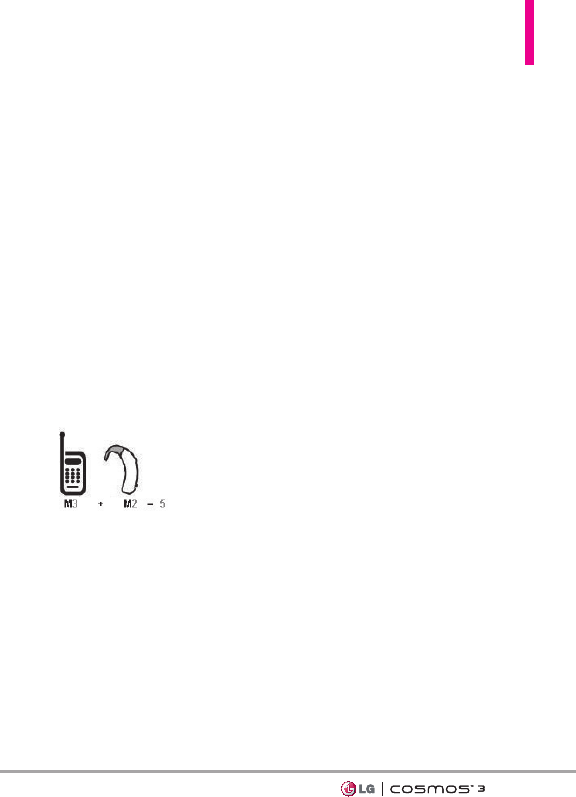
109109
likely to generate less interference
to hearing devices than phones
that are not labeled. T4 is the
better/ higher of the two ratings.
Hearing devices may also be rated.
Your hearing device manufacturer
or hearing health professional may
help you find this rating. Higher
ratings mean that the hearing
device is relatively immune to
interference noise. The hearing aid
and wireless phone rating values are
then added together. A sum of 5 is
considered acceptable for normal
use. A sum of 6 is considered for
best use.
In the above example, if a hearing
aid meets the M2 level rating and
the wireless phone meets the M3
level rating, the sum of the two
values equal M5. This should
provide the hearing aid user with
“normal usage” while using their
hearing aid with the particular
wireless phone. “Normal usage” in
this context is defined as a signal
quality that’s acceptable for normal
operation.
The M mark is intended to be
synonymous with the U mark. The
T mark is intended to be
synonymous with the UT mark. The
M and T marks are recommended
by the Alliance for
Telecommunications Industries
Solutions (ATIS). The U and UT
marks are referenced in Section
20.19 of the FCC Rules. The HAC
rating and measurement procedure
are described in the American
National Standards Institute (ANSI)
C63.19 standard.
When you're talking over the cell
phone, it's recommended you'd
turn the BT (Bluetooth) mode off
for HAC.
This phone has been tested and
rated for use with hearing aids for
some of the wireless technologies
that it uses. However, there may be
some newer wireless technologies
used in this phone that have not
been tested yet for use with
hearing aids. It is important to try
the different features of this phone
thoroughly and in different
locations, using your hearing aid or
VN251S_VZW_UG_EN_V1.0_130410.qxd 4/11/13 1:44 PM Page 109


















